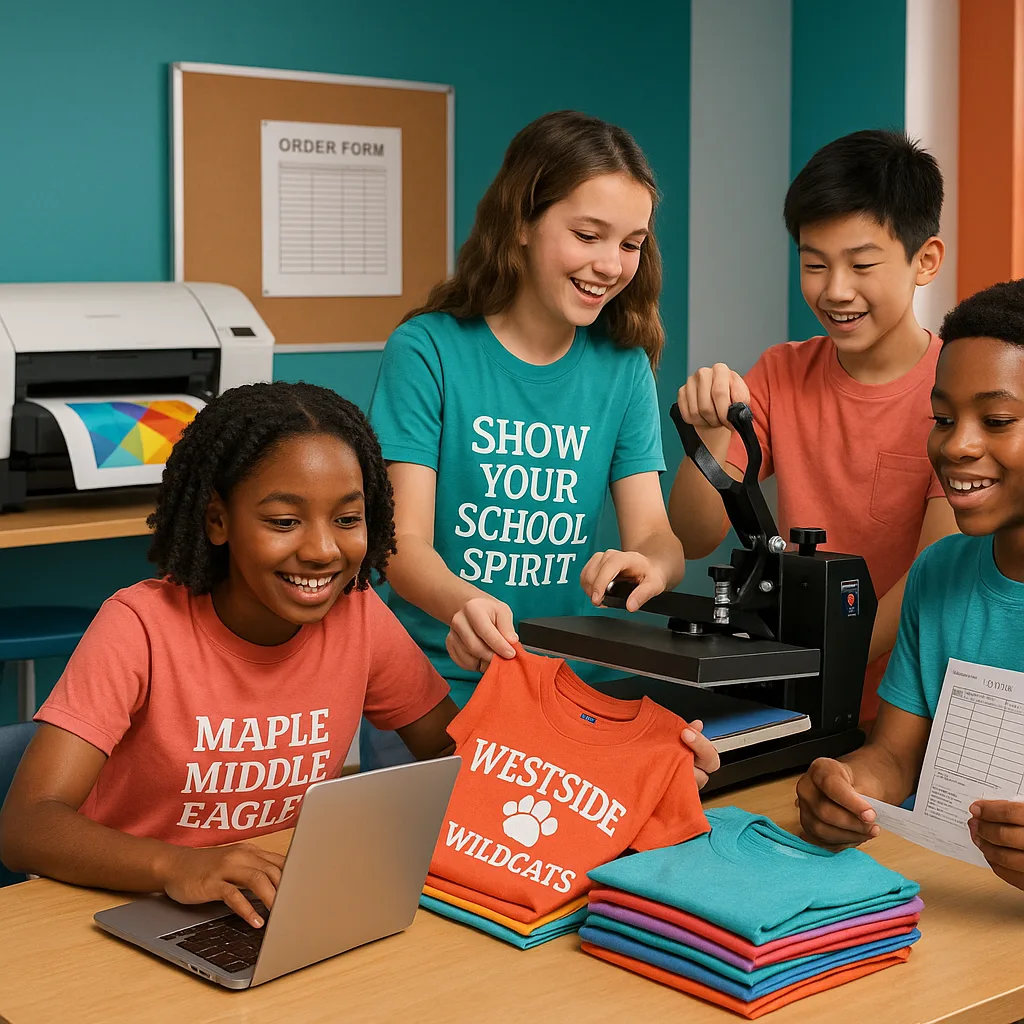Teacher Poster Maker Powers Student Apparel Business
Teacher Poster Maker for Student Enterprises: The Basics
Let me break down why sublimation printing is absolutely perfect for student businesses. Unlike traditional screen printing (which requires separate screens for each design), sublimation lets students create one-off custom pieces instantly. Moreover, the process is clean, safe, and produces professional results that rival any commercial print shop. When I introduced sublimation in my classroom last year, students went from zero to launching their first product line in just three weeks!
The technology works by turning solid dye into gas that bonds permanently with polyester fibers. This means vibrant, full-color designs that won’t crack, peel, or fade—even after hundreds of washes. Additionally, students can print photographs, complex graphics, and gradient designs that would be impossible with vinyl cutting or screen printing. The learning curve is surprisingly gentle, making it accessible for 11- to 14-year-olds who are eager to dive into entrepreneurship.
Business Planning: From Idea to Implementation
Here’s where the rubber meets the road—turning enthusiasm into an actual business plan. First, students need to identify their target market (spoiler alert: it’s probably their peers and parents). Next, they’ll research competitor pricing and create a unique value proposition. I’ve watched seventh graders develop sophisticated market analyses that would impress any business teacher. The key is breaking down complex concepts into bite-sized, actionable steps.

Student teams should assign roles based on strengths: designers, marketers, finance managers, and production specialists. Furthermore, creating a simple business canvas helps visualize how all pieces fit together. We use giant poster boards (printed on our poster machine, naturally) to map out customer segments, revenue streams, and cost structures. This visual approach makes abstract business concepts tangible for middle school minds.
Design Basics: Creating Products That Sell
Design sells products—period. Students quickly learn that “cool” isn’t enough; designs must resonate with their target audience. We start with mood boards, exploring color psychology and trending aesthetics. For instance, our most successful designs combine school colors with contemporary graphic styles that feel fresh, not dated. Students analyze what makes certain designs go viral on social media, then apply those principles to their own creations.
Technical considerations matter too. Sublimation works best with light-colored polyester garments, so designs must account for this limitation. Additionally, students learn about resolution (300 DPI minimum), color profiles (RGB for digital, CMYK considerations), and file formats. We’ve created design templates that ensure proper margins and safe zones, preventing those rookie mistakes that lead to cut-off text or misaligned graphics.
Copyright and intellectual property discussions become incredibly relevant when students want to use popular characters or logos. Instead, we encourage original artwork, photography projects, and creative typography. This constraint actually boosts creativity—I’ve seen students develop signature styles that become their brand identity. One group created a line of motivational quote shirts using hand-lettering that outsold everything else at our spring carnival.
Design Tips
Click for insider design strategies that boost salesPro Secrets
• Use contrast for readability• Keep text larger than you think
• Test designs at arm’s length
• Consider garment color
• Leave breathing room
• Mirror designs before printing
Financial Management for Student Enterprises Using Teacher Poster Makers
Money management becomes real when students handle actual revenue. We use simple spreadsheets to track expenses, sales, and profits. Every team member learns basic accounting principles through hands-on experience. For example, calculating cost per shirt includes materials, electricity for the heat press, and even depreciation on equipment. This comprehensive approach prepares students for real business ownership while keeping math relevant and engaging.
Profit allocation sparks meaningful discussions about business ethics and community responsibility. Most student enterprises follow a 40-40-20 model: 40% reinvested in supplies, 40% to fund school activities, and 20% divided among team members as “wages.” This structure teaches financial discipline while ensuring sustainability. Students quickly learn that short-term greed leads to long-term failure—a lesson that extends far beyond business class.
Learning Outcomes Beyond Business
Running a sublimation business teaches skills that transcend entrepreneurship. Communication improves dramatically as students interact with customers, negotiate with suppliers, and present to administrators. Math becomes practical through pricing calculations, profit margins, and inventory management. Technology skills advance through design software mastery and e-commerce platform navigation. Most importantly, students develop confidence in their ability to create value and solve problems.
Career exploration happens naturally. Some students discover passion for graphic design, others for marketing or finance. Several alumni have launched successful businesses in high school and college, crediting their middle school sublimation experience as the catalyst. Even those who don’t pursue business careers gain invaluable understanding of how companies operate, making them better employees and informed consumers.
Final Thoughts: The Impact Goes Beyond Profit
After three years of running student sublimation businesses, I’ve witnessed transformations that standardized tests can’t measure. Shy students become confident salespeople. Struggling mathematicians excel at financial projections. Artists discover business acumen. The poster machine that started as a tool for classroom decorations has become a gateway to real-world learning that sticks.
Your school already has incredible creative potential waiting to be unleashed. Whether you’re using an existing teacher poster maker or considering new equipment, the opportunity to blend entrepreneurship education with hands-on production is too valuable to ignore. Start small, think big, and watch your students surprise you with their innovation, dedication, and business savvy. The future entrepreneurs in your classroom are ready—are you?


